Eurobike 2023 felt a bit like a return to form. Wandering the packed halls elicited feelings of past trade shows full of excitement about the future of bikes. While it was definitely e-bike-heavy as usual, there was still quite a bit to be found for any type of cyclist.
Looking back on all that we uncovered, it’s time to sum up the best of the show. Call them the Eurobike hangover awards if you wish, these are our top picks for the most interesting bit of new tech we found, and a signal of the direction of the cycling industry for the next year and beyond…
MTB: Rock Machine Whizz Modular Platform
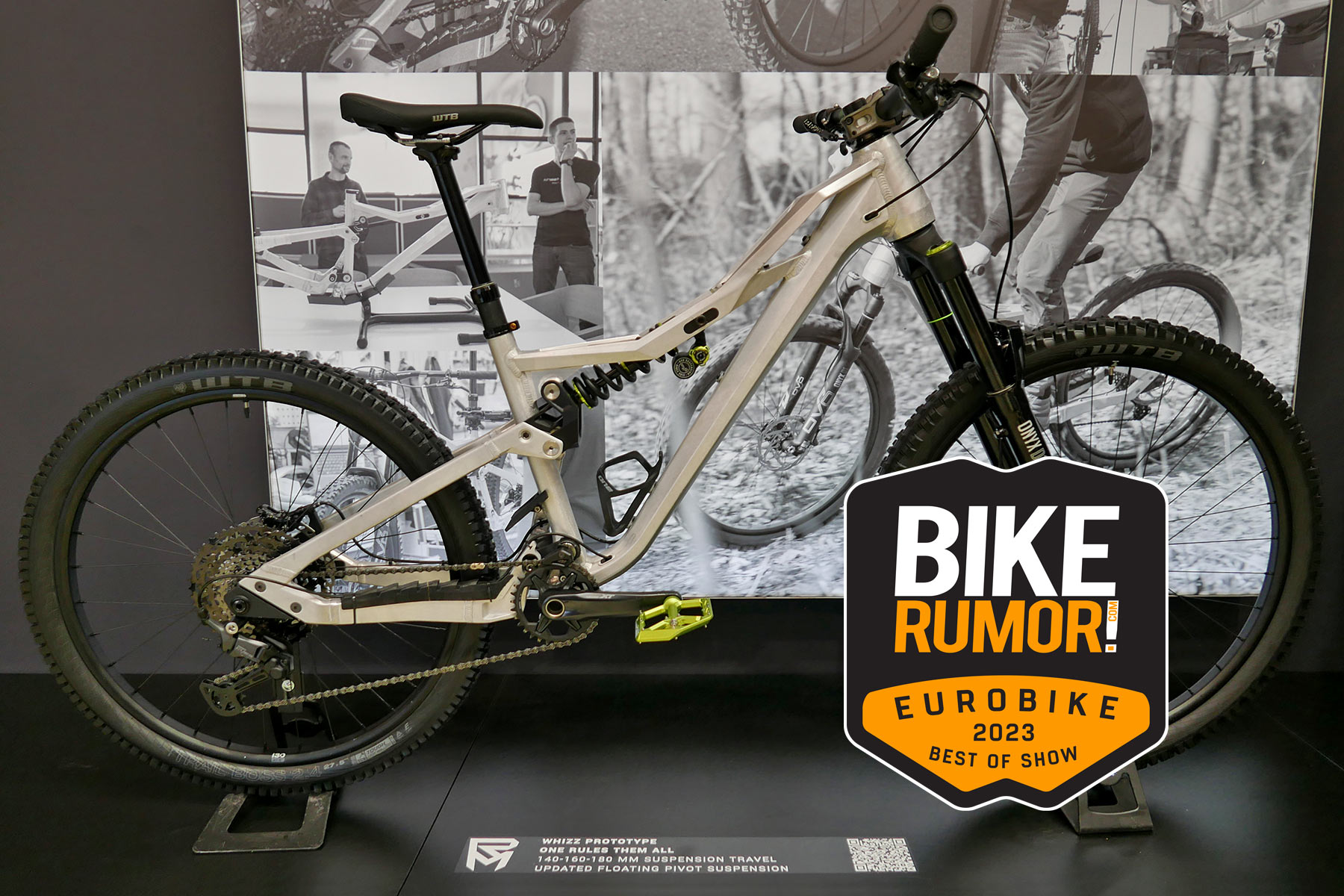
What makes Rock Machine’s new Whizz modular mountain bike most interesting to us is that it isn’t trying to be the lightest, fastest, or burliest mountain bike – or its divisive angular looks. Instead, the aluminum Whizz concept is about building a bulletproof platform that can adapt to the rider’s needs and can be built in a more resource-efficient way. One all-mountain / enduro / park bike that can be adjusted to 140mm, 160mm, or 180mm of travel; 27.5, mullet or 29er; head angle and chainstay length can be adjusted if needed; a 200mm dropper can fit every rider and style, internal or external cable routing; a different standard of dropout could even be bolted in; and there are even SUV-style build accessory mounting possibilities. Plus, from a materials perspective, one rear triangle can be used in both pedal-only and ebike versions, and one dramatically-shaped hydroformed top tube can be used on all sizes of both bike & eMTB variations.
Road Bike: Pilot Cycles’ Seiren 3d-Printed Titanium Bike
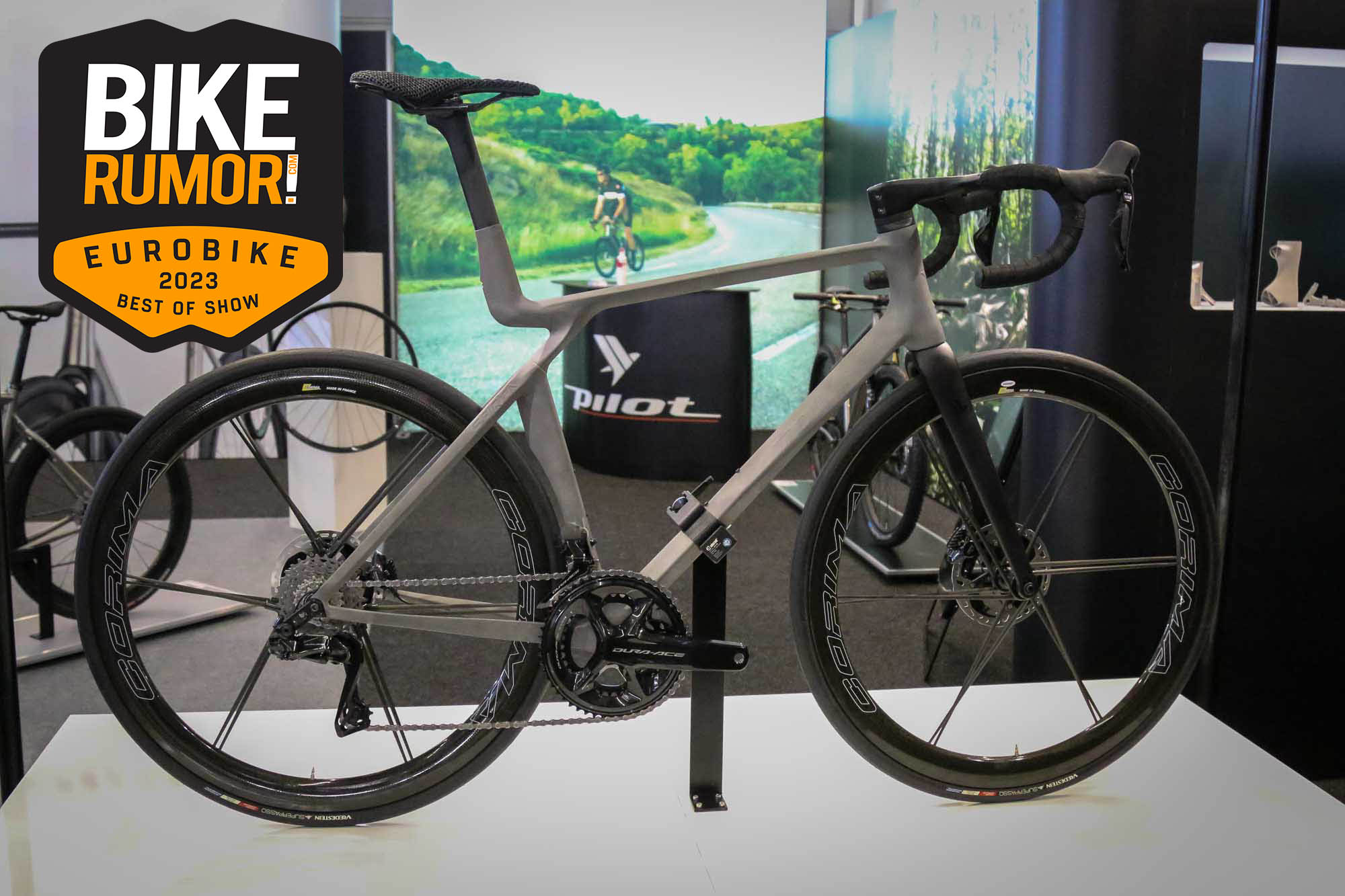
3D-printing technology is improving all the time (just look at some of the other items in this list). But we’ve still seen just a handful of bikes that are completely 3D-printed, and even fewer of those are completely 3D-printed in titanium. The Seiren from Pilot Cycles is one of, if not the first fully 3D-printed titanium road bikes we’ve seen.
Thanks to the use of 3D-printing, the frame has a number of custom details including embossed logos, optional braze ons & accessory mounts, custom geometry options, and more. Pilot Cycles tells us that the frame is printed in 3 parts that are then bonded together which includes the Trek Madone-esque seat tube, though Pilot claims that this was the result of the need for frame alignment rather than rider comfort.
Initially, the stratospheric price tag of $18k+ will prevent anyone but the most wealthy from owning one, but this award is more about the advancement of 3D-printing tech that will eventually trickle down to more affordable levels.
Gravel: SRAM Apex 12-speed Gravel Groupset in 4+ More-Affordable Options
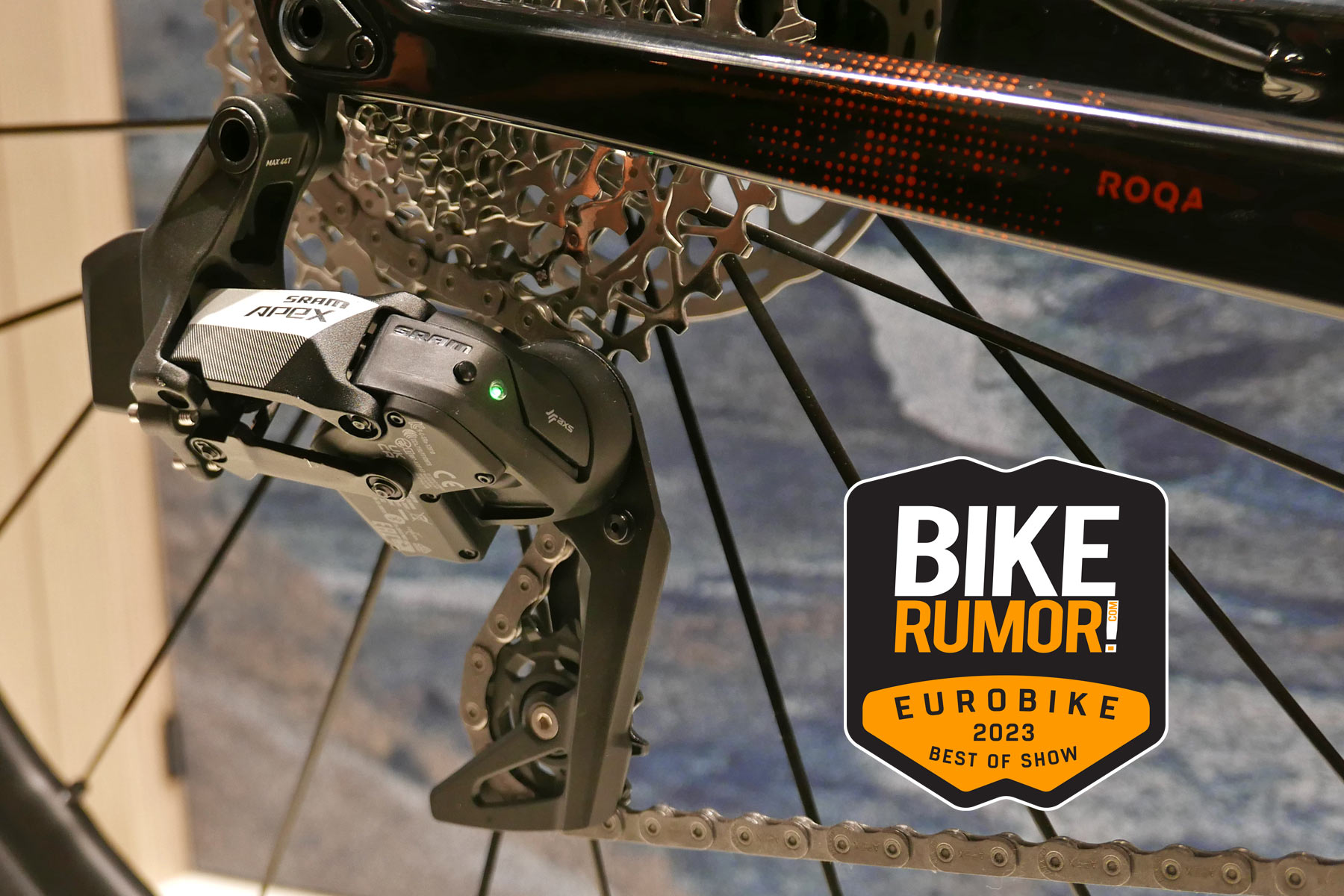
SRAM’s new entry-level Apex upgrade debuted just a couple of days before the start, but it really came into its own at Eurobike where you could find all sorts of gravel bikes kitted out with this latest tech, but at more affordable prices. What makes Apex unique is that it gives you all the 12-speed gearing options of SRAM’s top-tier gravel groups – be that XPLR or Eagle cassettes – BUT it also gives you the choice of picking the easy-to-use wireless AXS electronic shifting system or sticking with a much more affordable mechanical shift setup. On top of that, the new Apex is mix-and-match compatible with all other XPLR or Eagle components, opening up the possibility for lower-cost replacements to existing groups or the ability to upgrade one part at a time as you go. Plus, that compatibility means there are flat bar options for each of the 4 build possibilities – AXS XPLR, AXS Eagle, mechanical XPLR, Mech Eagle – making this likely to be the groupset we’ll see across the widest range of ‘gravel’ bikes from commuter to race builds.
Apex is also actually the first SRAM road/gravel/dropbar groupset to get 12-speed mechanical shifting, itself an important milestone in bringing top performance to a more accessible level. Complete groupset pricing starts as low as $680 / 784€ for flat bar Apex Eagle mechanical and tops out at $1294 / 1460€ for dropbar Apex AXS Eagle.
We expect to see the new Apex on complete bikes that sell from around $1850 up to around $3000.
EBike Motors/Drive Systems: Pinion ON.E eDrive Combined Gearbox & Motor
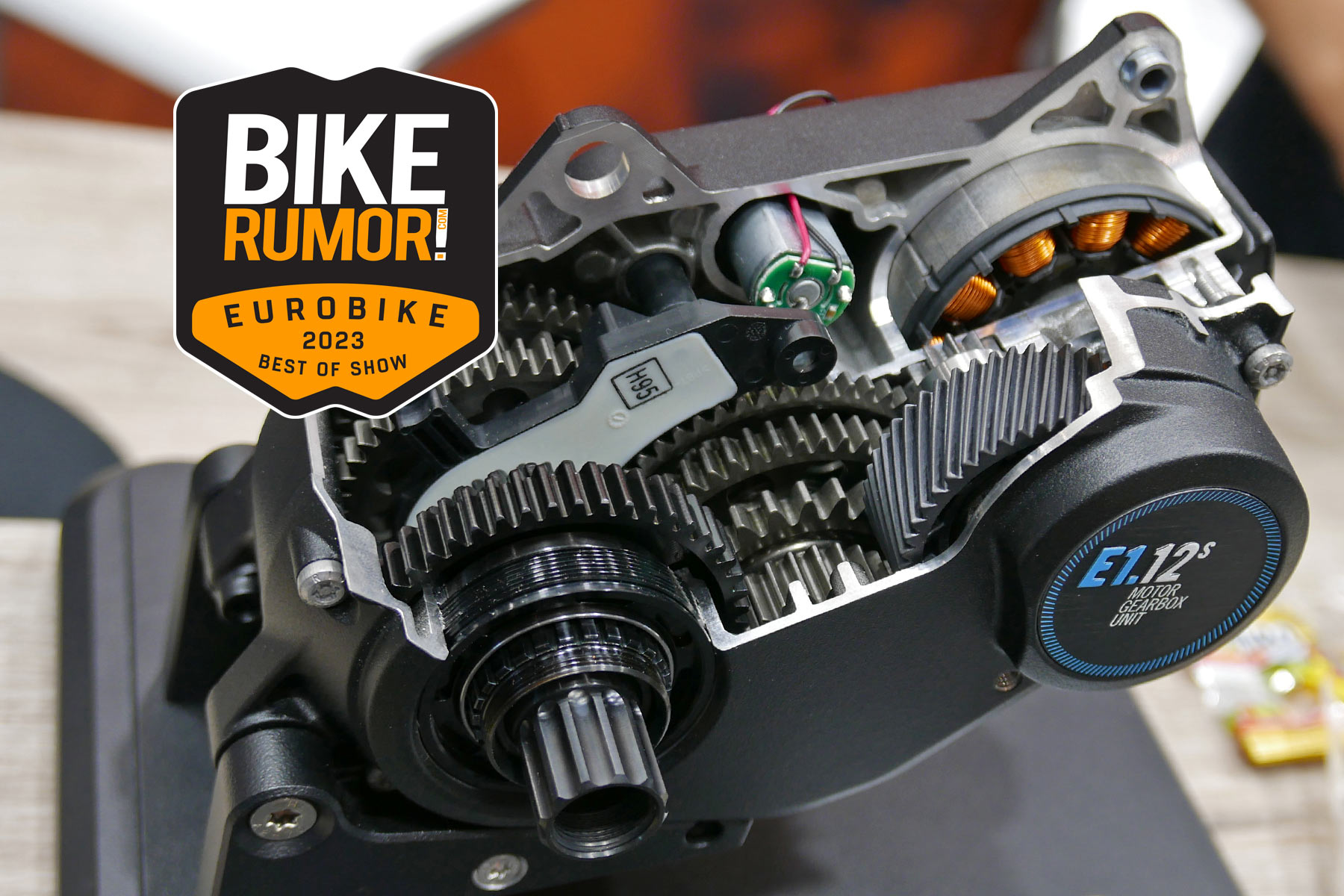
What makes the Pinion ON.E so interesting is that this is a component that is both better than the sum of its parts AND has the potential to be transformative to a number of different ebike segments. Gearboxes have been around for years; and certainly, Pinion has established itself as one of the performance & reliability benchmarks for mid-drive solutions. And there are more ebike motor possibilities than you can shake a stick at. Combining a powerful motor with a gearbox (which critically doesn’t really shift under load) in a compact mid-drive solution barely larger than competitor ebike motors was no easy feat. Getting it to shift while being simultaneously loaded by ebike rider pedal input and/or motor power input is impressive. Transformative is that an ebike rider’s entire enclosed drivetrain and powertrain will only require an oil change every 10,000km when combined with a no-maintenance belt drive – all with no rear derailleur or cassette to wear or be subject to external damage. Then, from a suspension design perspective, that ~1kg of unsprung derailleur & cassette weight is moved to a more central balanced location in the frame, where it is now sprung mass that the suspension can be tuned for, opening the door for eMTB designers to have much more control on how their suspension actually performs when combined with optimized battery placement.
eMTB: Crossworx Trip 290
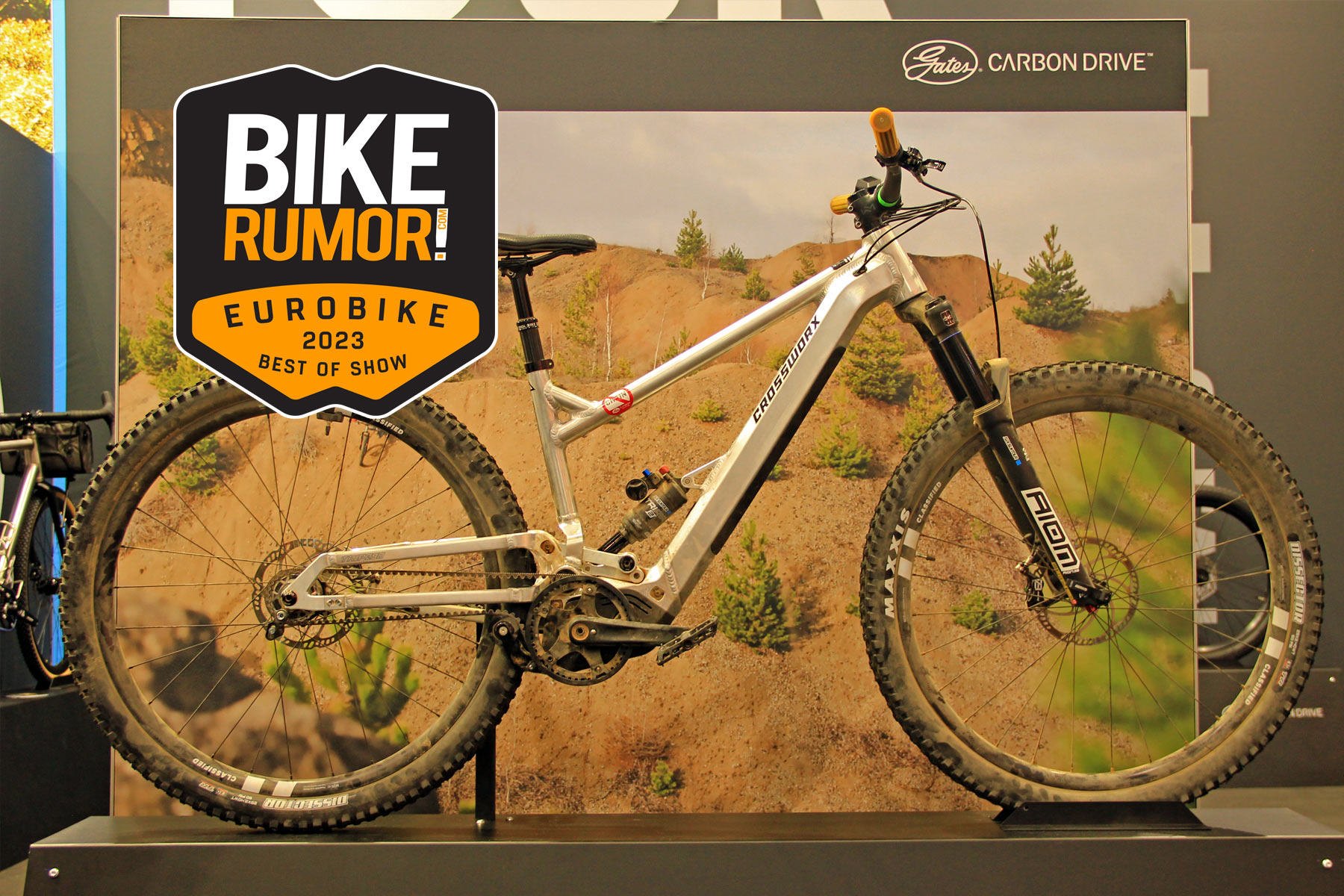
Now, it won’t be to everyone’s taste, but we are loving the use of alternative drivetrain technology on the Crossworx Trip 290 eBike. Still under development, this linkage-driven single pivot delivers 140mm of rear wheel travel on an aluminum frame that is built in Germany.
It combines the 55 Nm torque of the latest Bosch Performance Line SX motor – that itself weighs just 2 kg – with the durability of a Gates Carbon Drive. You’ll see a single sprocket at the rear, but the Classified Powershift Hub makes this a two-speed eBike thanks to the hub’s internal gearing. Yes, the Pinion Mission ON:E offers 12 discrete gears inside its neatly-packaged MGU, but it comes at the expense of an additional 2 kg and a much wider Q-Factor.
Classified have rolled out this technology for road, gravel and more recently to regular derailleur-operated 12-speed mountain bike drivetrains – making them 24-speed, of course. Word is, the Commencal Enduro Team are testing it out for use on the Meta SX V5 race bikes destined for the UCI-EDR Series.
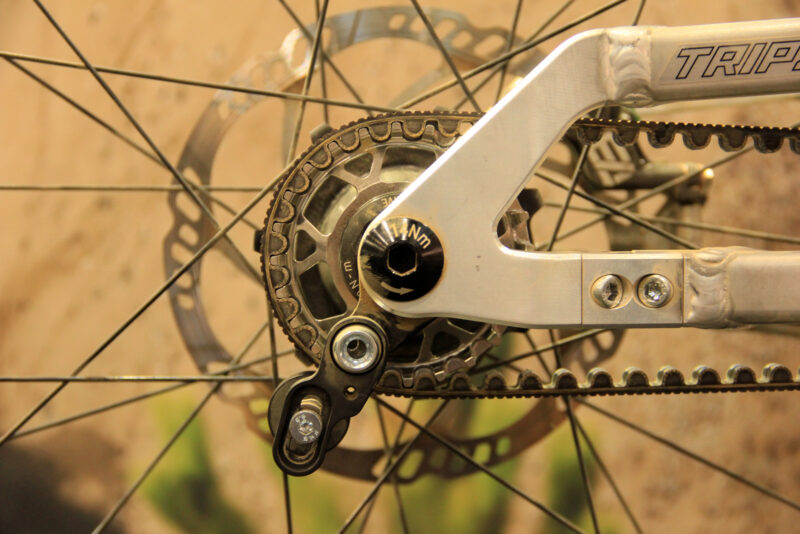
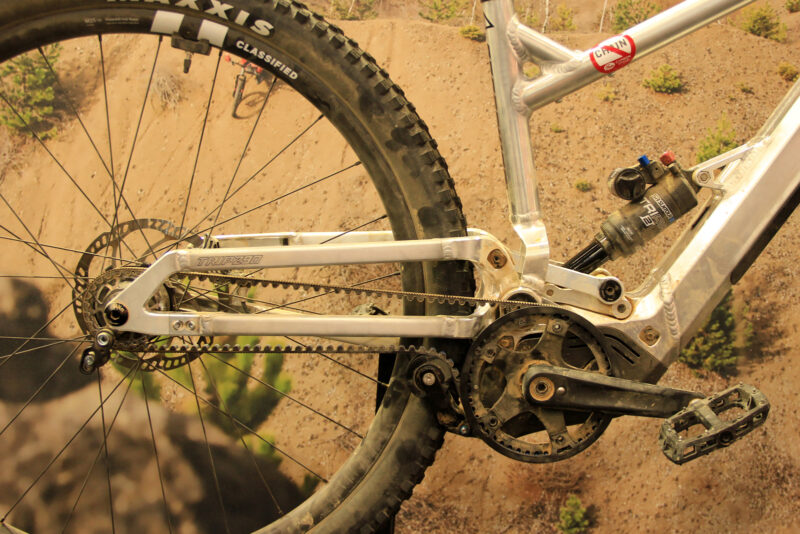
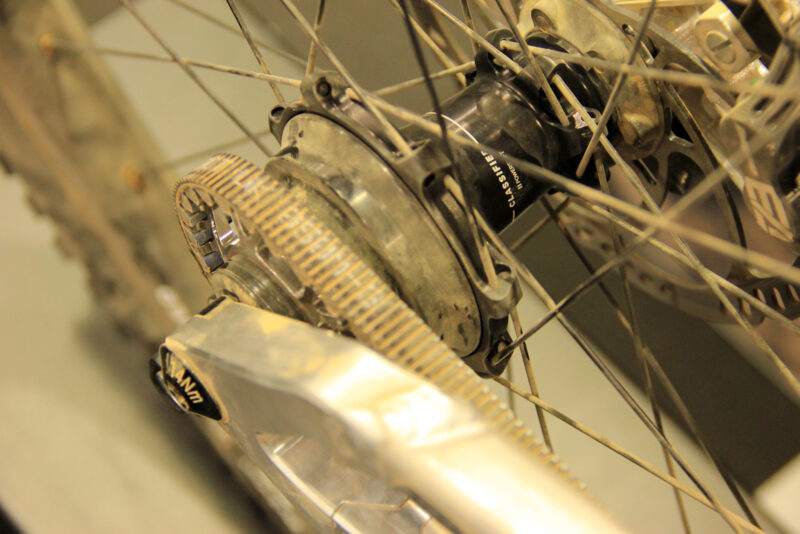
I digress. The Crossworx Trip 290 just speaks to me (Cory). I really want this unusual collection of drivetrain parts to work well together. The relative simplicity of it is really quite appealing; there’s no derailleur to fret about, there’s a maintenance-free belt-drive, and the only gearing you have is neatly packed away inside a sealed hub.
On this bike, the 48T chainring is paired with a 24T cog on the hub to give a gear 2:1 ratio. But, the Classified Powershift Hub delivers a second gear ratio of 1:0.7, giving an effective chainring size of 24T.
I do question the ability of the Bosch SX motor to put up with the very wide range of rider cadences that a limited two-speed offering will give rise to. However, I think there is potential here for the Crossworx Trip 290 to be all the eBike that many folks could ever need.
Suspension: Motion Engineering’s 120mm Linkage Fork
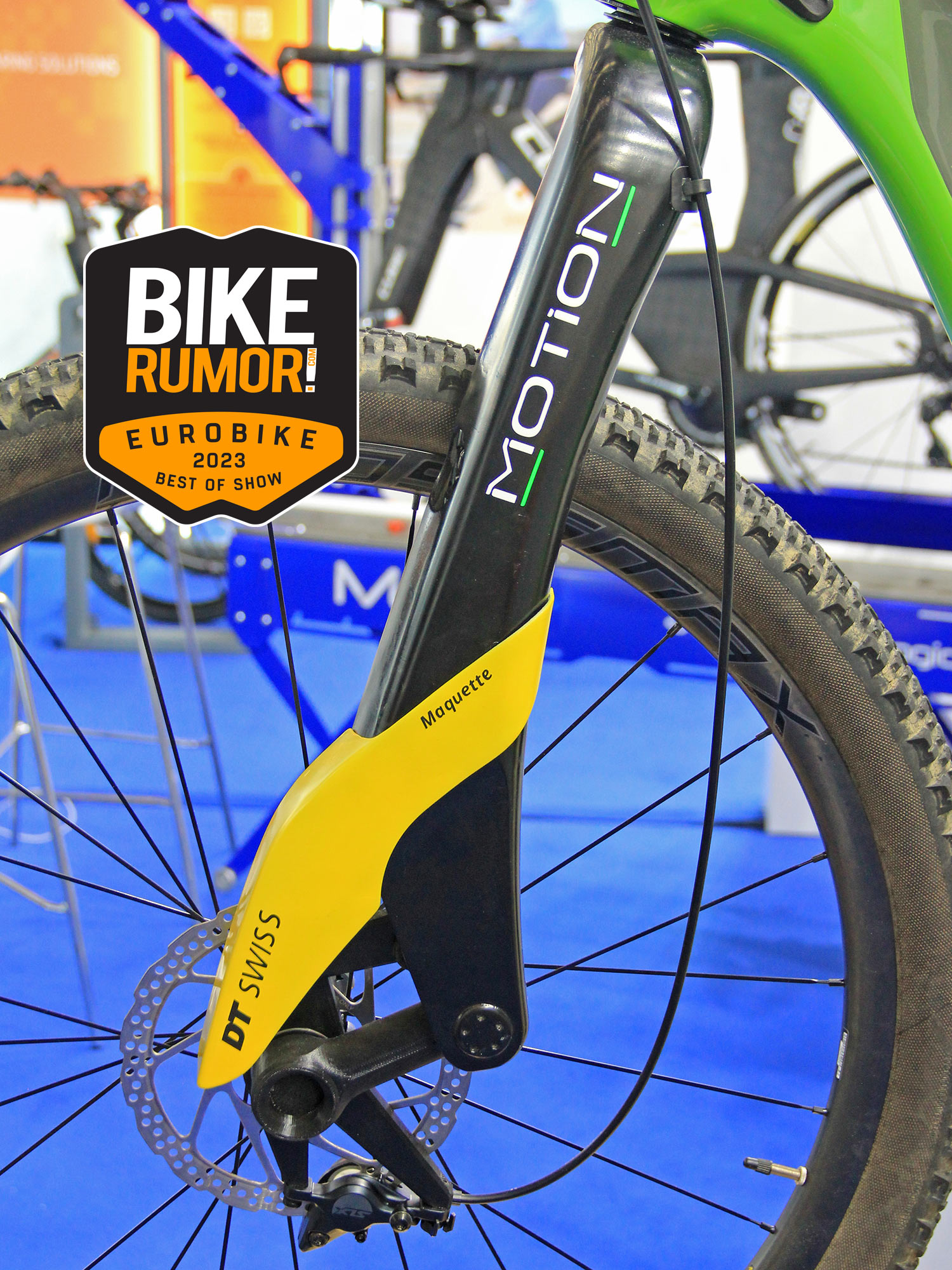
Motion Engineering are developing a 120mm travel linkage-fork that is set to weigh around the 1,200 gram mark – a weight that will make it around 185g lighter than Intend’s Samurai CC which currently holds the accolade for the world’s lightest suspension fork of that travel length.
And, its unusual linkage design that makes use of a braking torque arm is said to make it completely neutral under front wheel braking; which compares to traditional telescoping forks that have a tendency to dive a little.
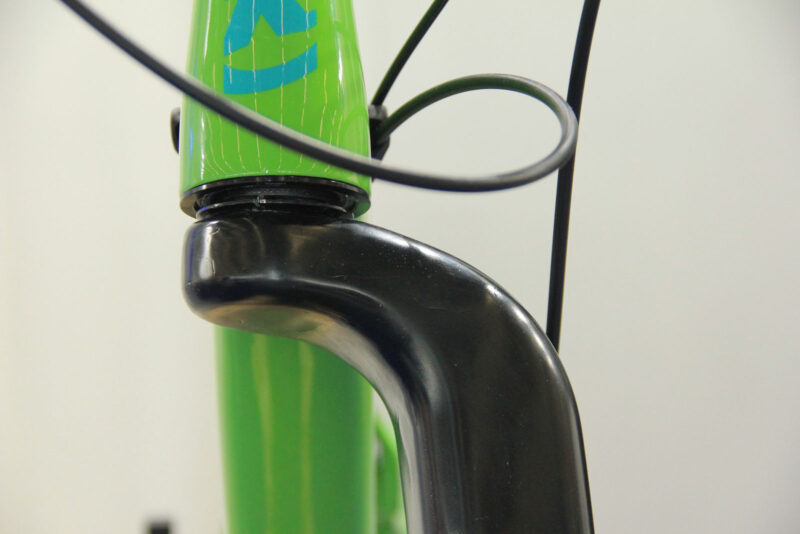
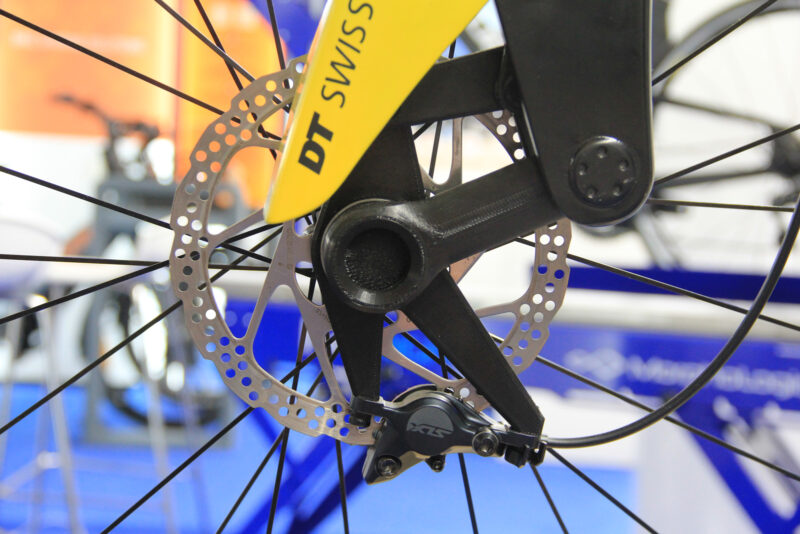
In the world of cross-country where weight is a big deal, to have a 120mm fork offering that is ~ 346 grams lighter than the commonly raced RockShox SID is nothing to be sniffed at. The fork’s half-crown design and one-piece monocoque carbon steerer and crown go a long way to making its weight so competitive.
It does not have a leaf-spring, as we see on Motion’s La City fork. Though we couldn’t really get a good view of it on the 3D-printed prototype on display at Eurobike, this 120mm fork will make use of a standard air shock. In theory, that makes the design as tuneable as the vast array of rear shocks on the market – so long as they fit, of course.
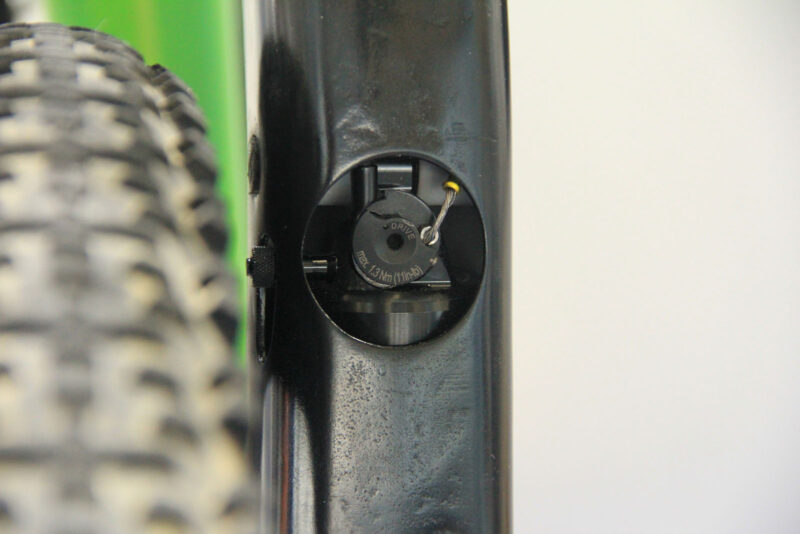
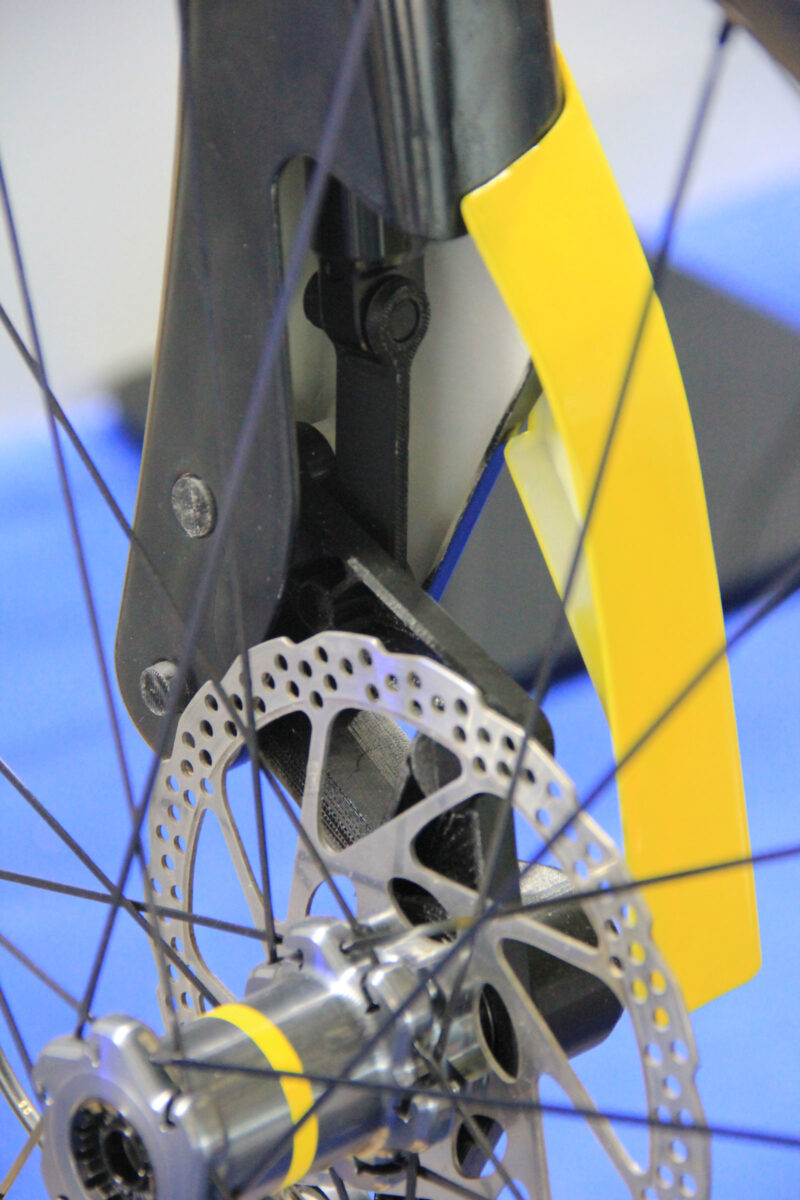
In practice, Motion plan to work closely with bike manufacturers to develop forks around each frame specifically. Word is, this will initially be an OEM-only product, but we’ve no doubt that could change if aftermarket appetite proves to be high. More info on this one here.
Manufacturing: Trickstuff x Trumpf 3D-Printed Bike Parts
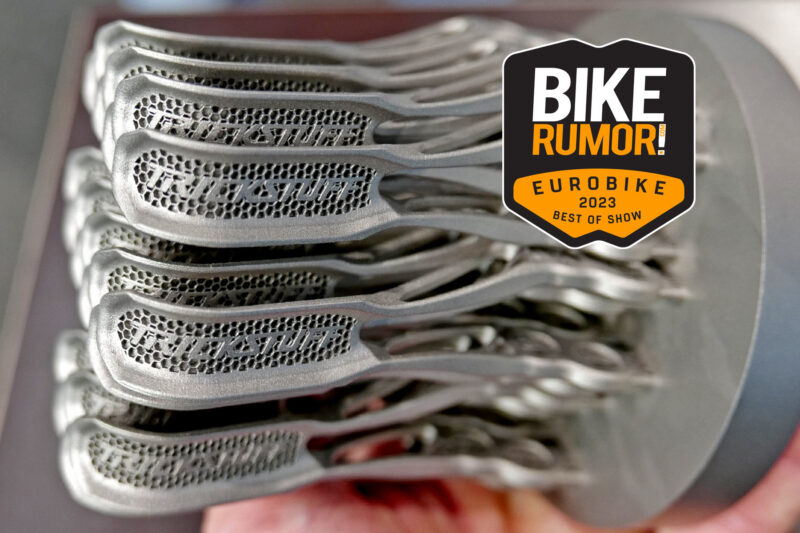
We’re a little off-piste here, but it would be rude not to provide mention of Trickstuff’s 3D-Printed titanium levers for their Piccola and Direttissima. We call these out not only because they are impressively lightweight and rather aesthetically pleasing, but also because of the relative economy of the additive manufacturing method used to create them. Bare with.
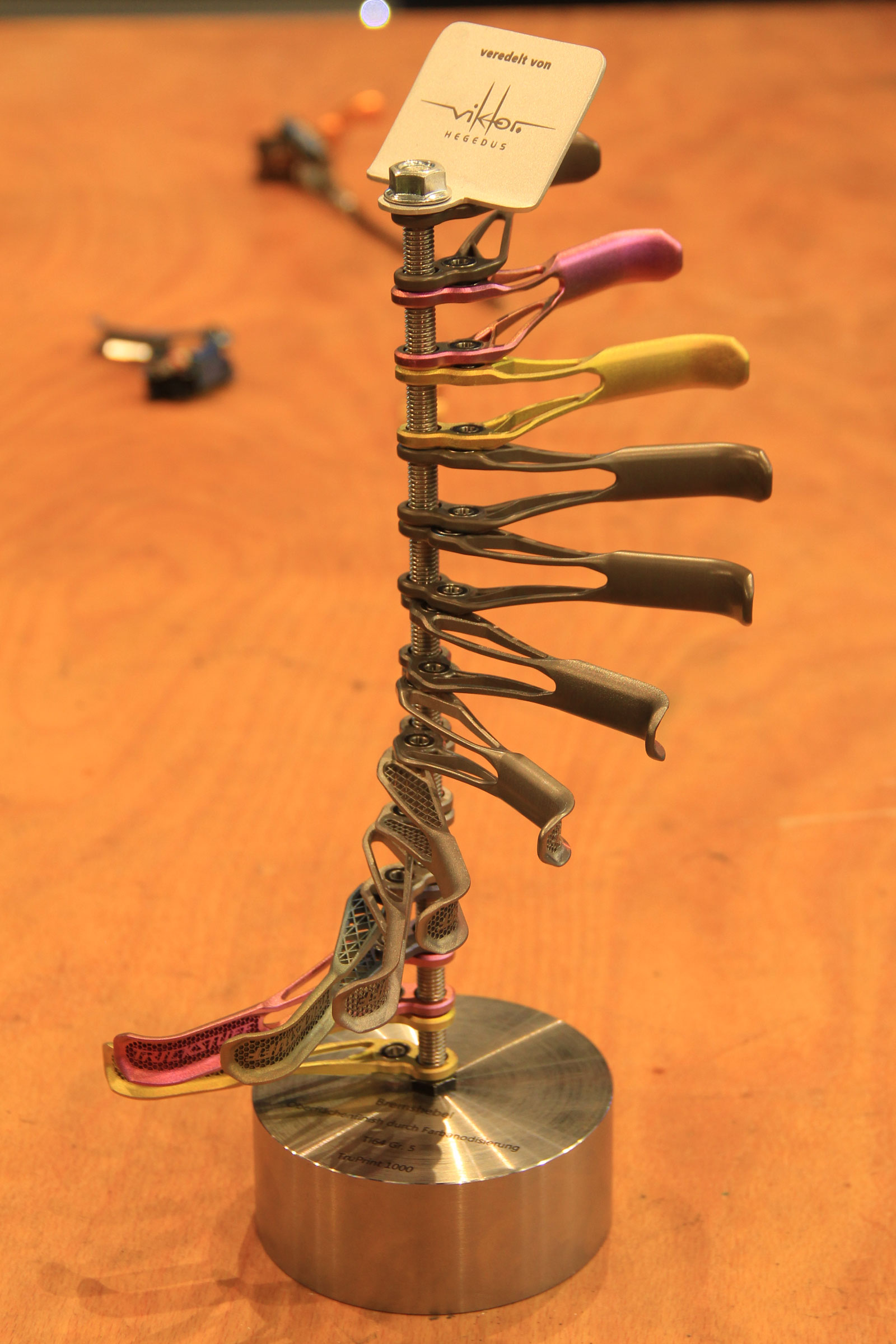
Trickstuff are currently working closely with Trumpf, a company that produces the laser-sintering machines that are responsible for the beautiful array of titanium levers you see before you, but also for the 6061 aluminum bottom bracket-seat tube cluster of a prototype six-link Intense downhill bike.
Trumpf approached Trickstuff with the offer of a machine on loan to allow the team to see firsthand how their additive manufacturing systems can be used to create bicycle components. As compared to CNC-machining, 3D printing has the capacity to produce a greater diversity in the shape of parts that could ultimately offer performance advantages; just think about that in terms of the oil path inside a hydraulic brake caliper, for example.
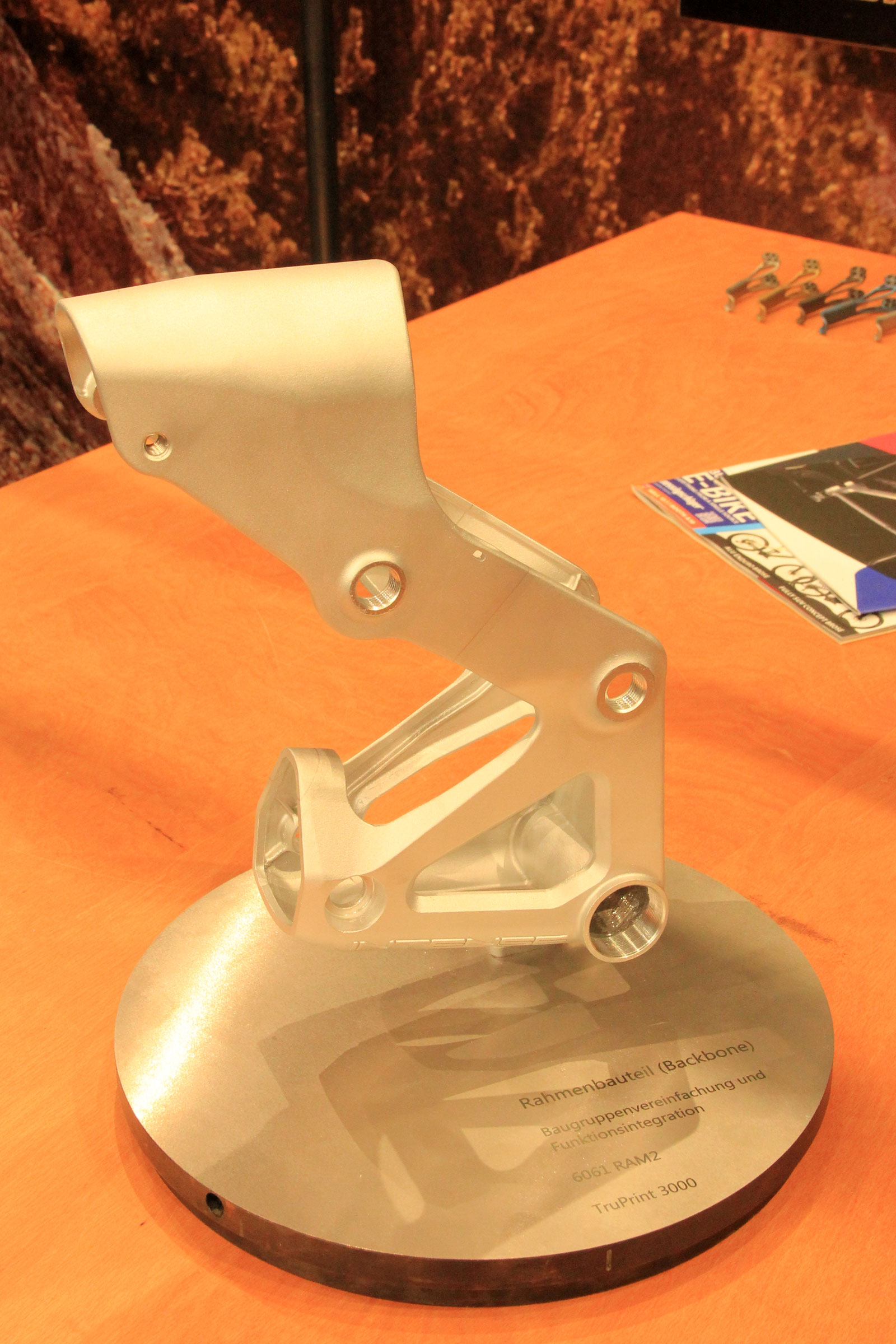
Chris Lengwenat, a representative of Trumpf, tells us that their additive manufacturing systems offer advantages over comparable systems, both in terms of the structural integrity of the final product, but also in terms of the processing time required post-manufacture.
That’s because these machines have the ability to pre-heat the build plate to 500°C, which is said to result in a reduction in the internal stress in the parts and the deformation that would otherwise occur during the welding process by up to 80%. As a result, the dimensional accuracy of the parts is increased and their mechanical properties are such that, part-dependent, heat treatment is often not required afterwards.
The method also requires fewer support structures to be created with the part – structures that need to be removed after manufacture in a labor-intensive process. In turn, the cost of production can be reduced quite significantly. The suggestion seemed to be that this method of manufacture has the potential to bring the cost of printed titanium parts to a point at which they will be almost competitive with the cost of CNC-machined aluminum counterparts.
Urban: Riese & Müller Subscription Leasing Program
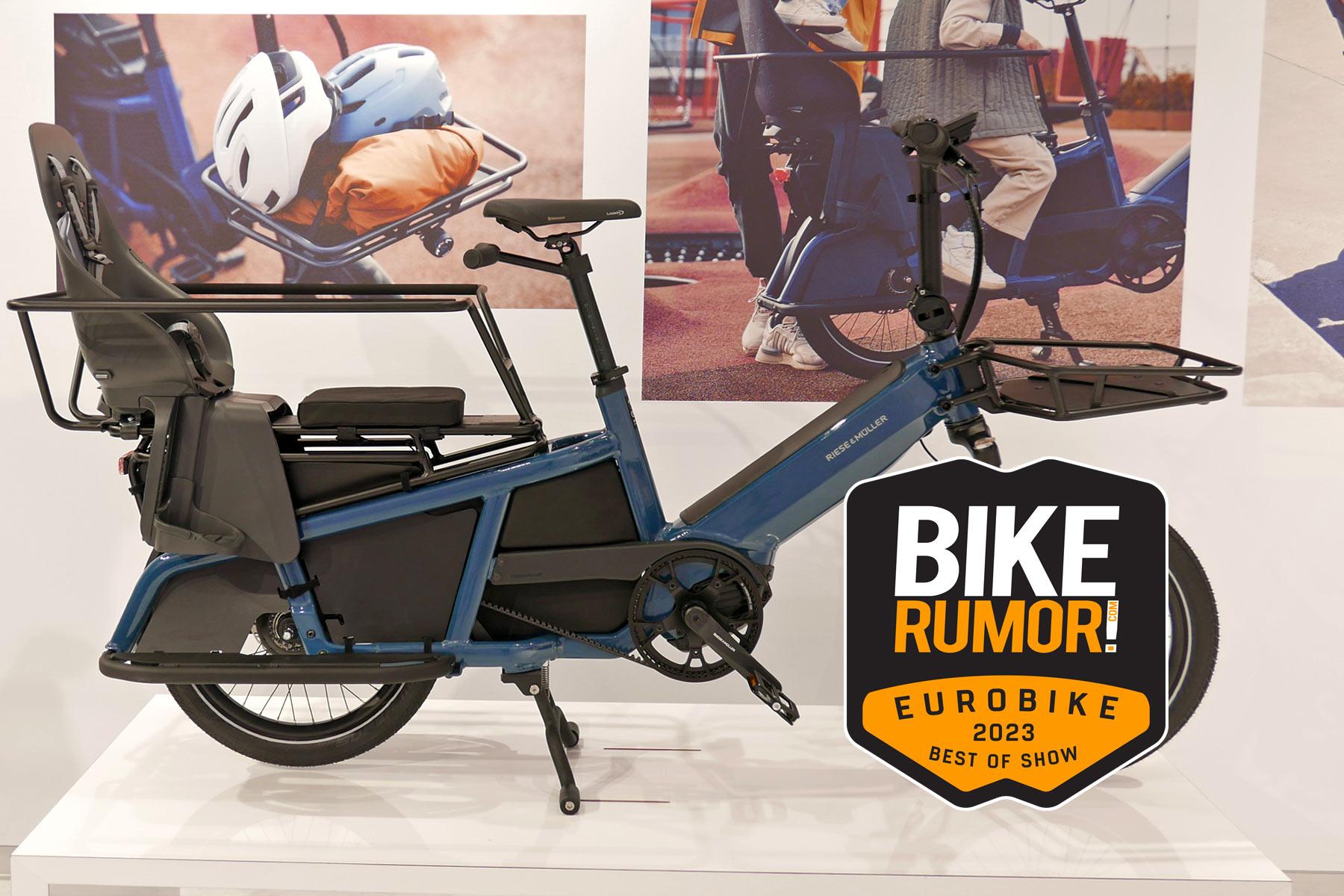
Riese & Müller’s city commuter ebikes range from high-speed single-occupant pedelecs to slow-moving cargo ebikes designed to haul your whole family around town. But no matter how you look at it, they are expensive – you can easily 6-8,000€ on your ideal setup. Their new subscription plan means for about 100€ per month, you can subscribe to something of an ebike lease that will get you the perfect setup that fits your needs without a big outlay of cash up front, then as your needs change, you can shift to a different Riese & Müller ebike that better fits how you ride. We suspect most of Riese & Müller’s customers are urban families buying family movers. And as your family grows and your kids get bigger, we see this as a great way to always have the perfect car-free setup to haul the little ones around as you run to get groceries, and then scale up when you have more kids or your kids outgrow smaller child seats to ride on their own. Plus, our friends in Germany say it is essentially the same price or cheaper than many public transit pass options.
Components: Astral Seatpost with O.N.S.
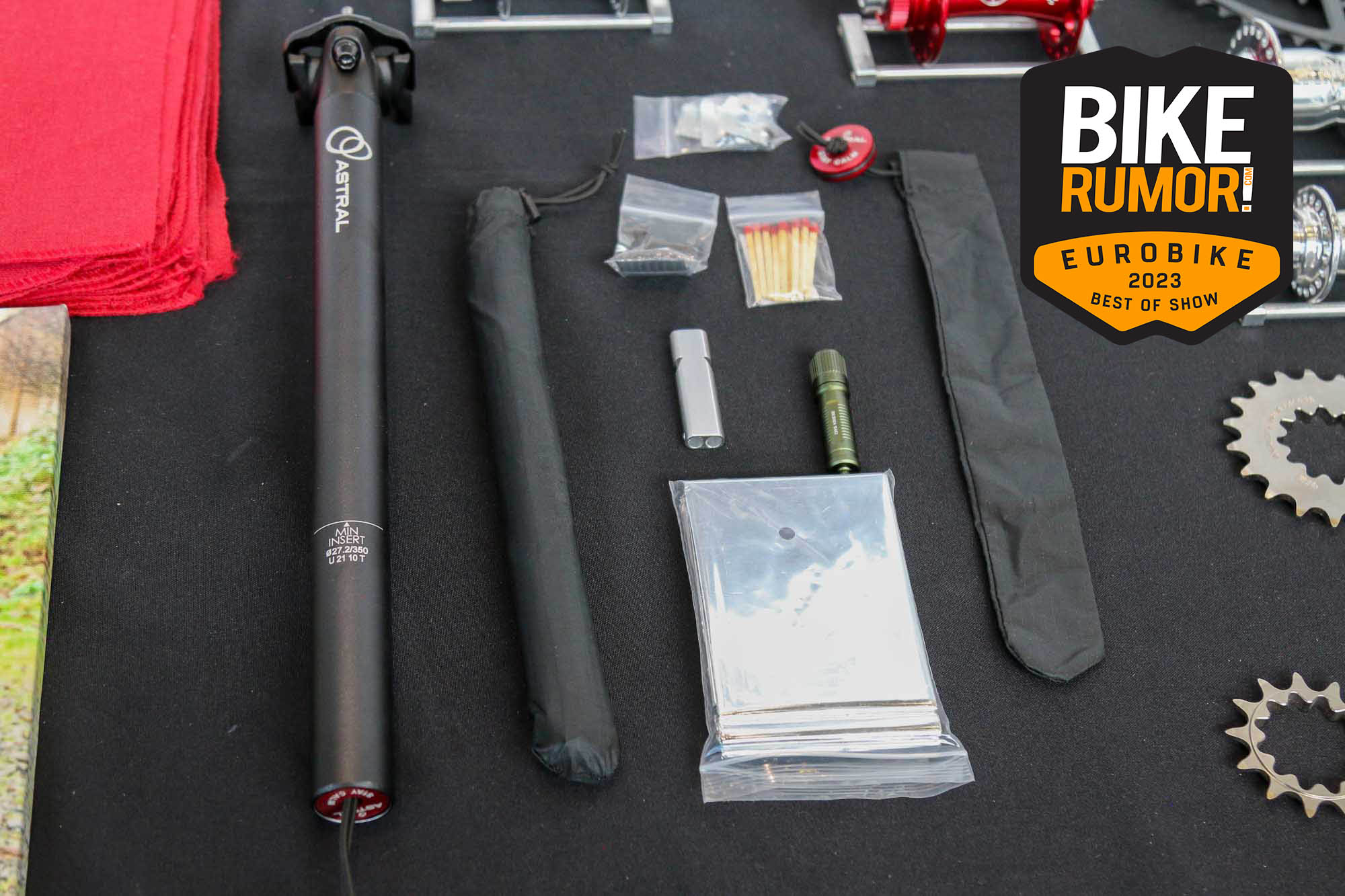
Do you ride into remote areas on a regular basis? Would you be prepared if you had an emergency and had to spend the night? That’s the idea behind the Astral O.N.S. package or One Night Saved. The lightweight kit packs up neatly and fits inside the Astral 27.2 or 31.6mm seat posts. Inside, you’ll find a flashlight, whistle, waterproof matches, strike paper, fire starter, water purification tablets for 3 quarts, and a space blanket. The O.N.S. package has been available from Astral for a bit, but this was the first time we’ve seen it in person, and it seems like a great idea for your bike without a dropper post.
Tires: Schwalbe Aerothan Tire Concept
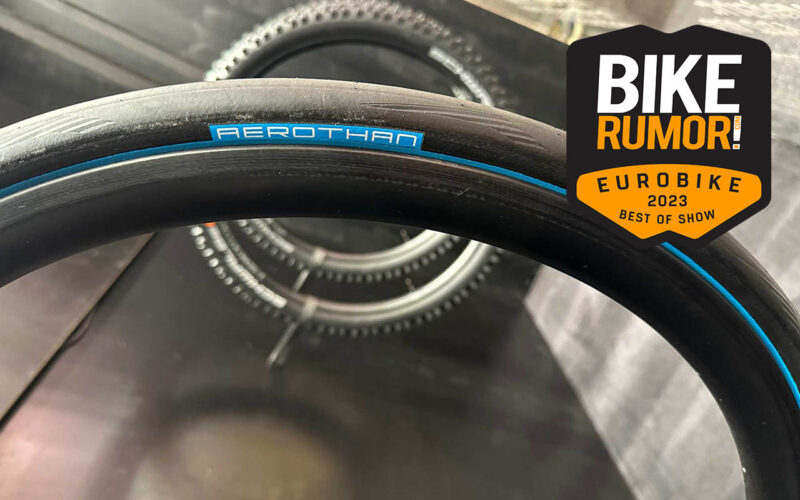
If, and this is a big if, Schwalbe’s Aerothan road bike tire concept delivers on its promises, it has the potential to be a game changer for road tires. With the potential for “super low rolling resistance, a more supple ride, and puncture protection on par with tubeless tires”, all of a sudden road riders have a tubed tire option that will rival tubeless. Oh, it’s also just 165g for the tire and 100% recyclable.
Clothing: Leatt All//Mntn 3.0 Tech Riding Pants
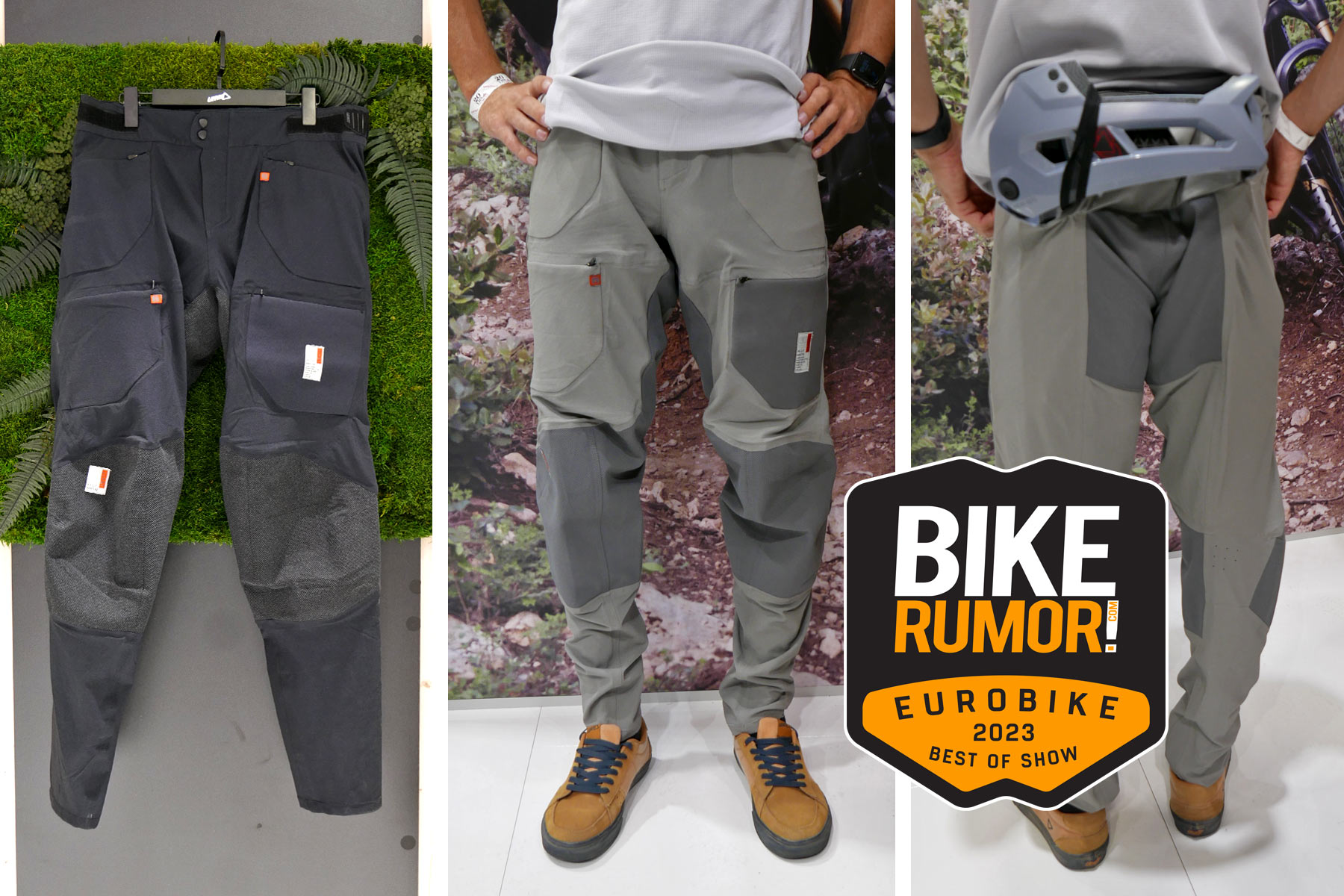
Designed to cross disciplines as many all-mountain bikers do, the techy tapered-leg Leatt All//Mntn 3.0 riding pants (and shorts too) feature 3 or 4 different core materials to give a balance of lightweight performance and protection. Leatt’s brand is built on protection – mostly from big impacts – but their functional clothing doesn’t always get as detailed a look as helmets, neck braces & pads. These multi-colored cargo pants have abrasion-resistant panels where you are likely to scuff them up, all the cargo pockets you could hope for – but still well-placed and slim enough to ride comfortably, plus a unique stretchy loop at the back to carry the removable shin bar from their convertible full-face helmets. The light pants promise moisture control breathability via a mix of lightweight softshell fabrics then DWR coated so they will keep you dry even in some lightly rainy conditions, and SPF 50+ rated to keep the sun at bay too. They also come in two-tone grey, two-tone red/orange, and a more subtle black for riders looking to blend in.
Accessories:
Eyewear: Automatic Transition Lenses from Out Of & React
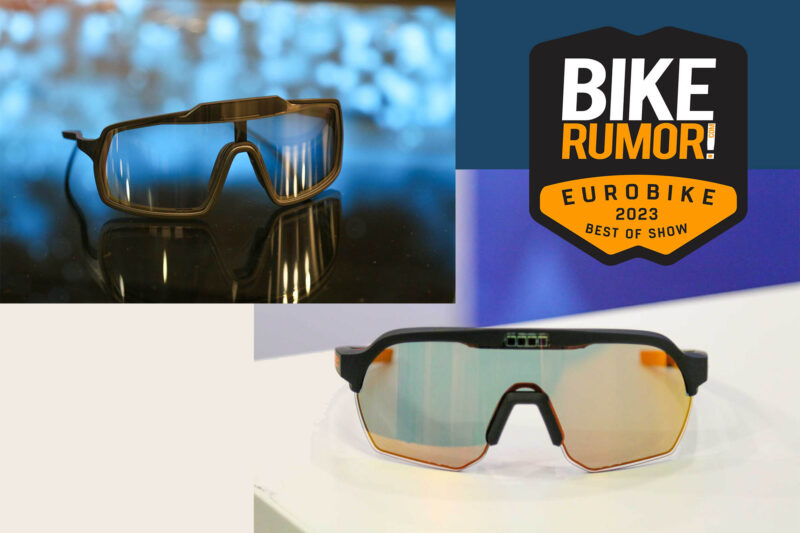
Described as an entirely new category in eyewear, both Out Of and React were showing futuristic shades which instantly transition to the ambient light. Photochromic lenses are nothing new, but the process usually takes a while, which can mean that by the time your lenses have adapted, the lighting has changed again.
This new generation of adaptive lenses changes that by using an LCD screen laminated with a solar cell which provides power without the need to recharge or plug-in. Both companies seem to have similar performance, with React claiming their lenses change in 0.1 seconds while Out Of claims 0.09 seconds.
The result seems to be lenses that truly change as quickly as the lighting conditions, for a potential game-changing product in the eyeglass world. We haven’t tested either of these in person yet (we hope to), but demonstrations at Eurobike seemed to back up the claims.
Bags/Packs: CamelBak Mule On-Bike Frame Pack
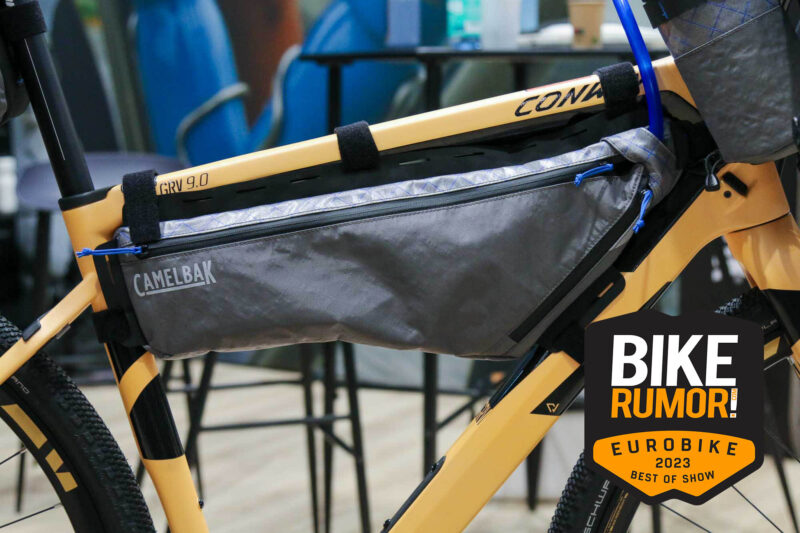
It’s no surprise that as more gravel racers and bikepackers are stuffing hydration bladders into frame bags, Camelbak has taken notice. It’s also not much of a surprise that Camelbak’s first hydration-specific frame pack looks really well-designed. Known for creating hydration packs that adapt to a wide range of bodies, their new Mule On-Bike Frame Pack looks like it will conform to a wide range of frames just as well.
Part of a new line of Mule On-Bike bags, the Eurobike Award-winning Frame Pack is built in tandem with a new 2L Quick Stow reservoir. The bag is also designed to use without the reservoir if you’d like, but the pack is also built with hydration in mind. The new reservoir includes a hose to drink from while riding the bike, but it also has a QuickStow Cap on the other end with an on/off valve for easy water dispensing at camp. It’s also compatible with the Lifestraw filters, so you can filter the water at camp directly into the bladder.
The bag itself has two sizes and multiple attachment points along three sides so you can place the velcro straps where you need them. Built with a water-repellent fabric and waterproof zippers, the water compartment has two zippers to make it easy to load the bladder, and the other side has a separate pocket for other goods.
Tools: Clever Standard Bacon Bullet
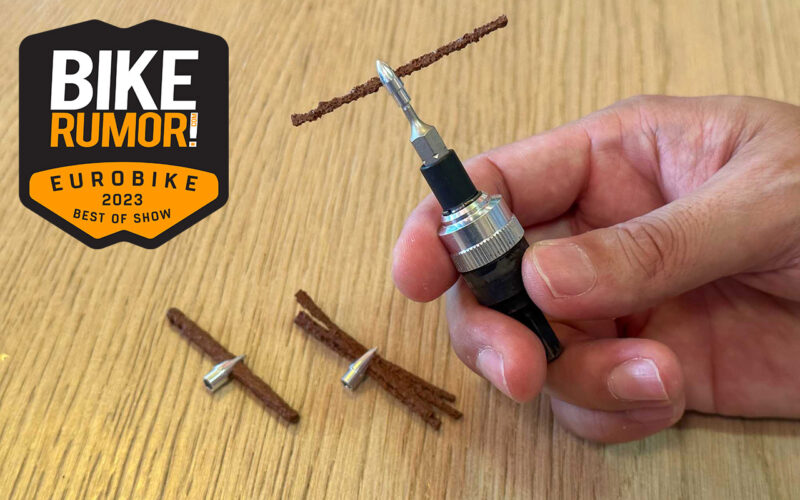
It’s not often that we need tire plugs, but when we do, there’s a good chance we don’t have the right size plug for the hole. The Bacon Bullet concept from Clever Standard addresses those issues by giving you multiple tip sizes with the option of mixing and matching bacon tubeless strips to best fit the puncture.
The result is a tubeless plug that uses more affordable inserts, can be inserted with almost any 2-3mm allen wrench, offers a patch that can’t be pulled out, and uses tips that are reusable once the tire has reached the end of its life.

